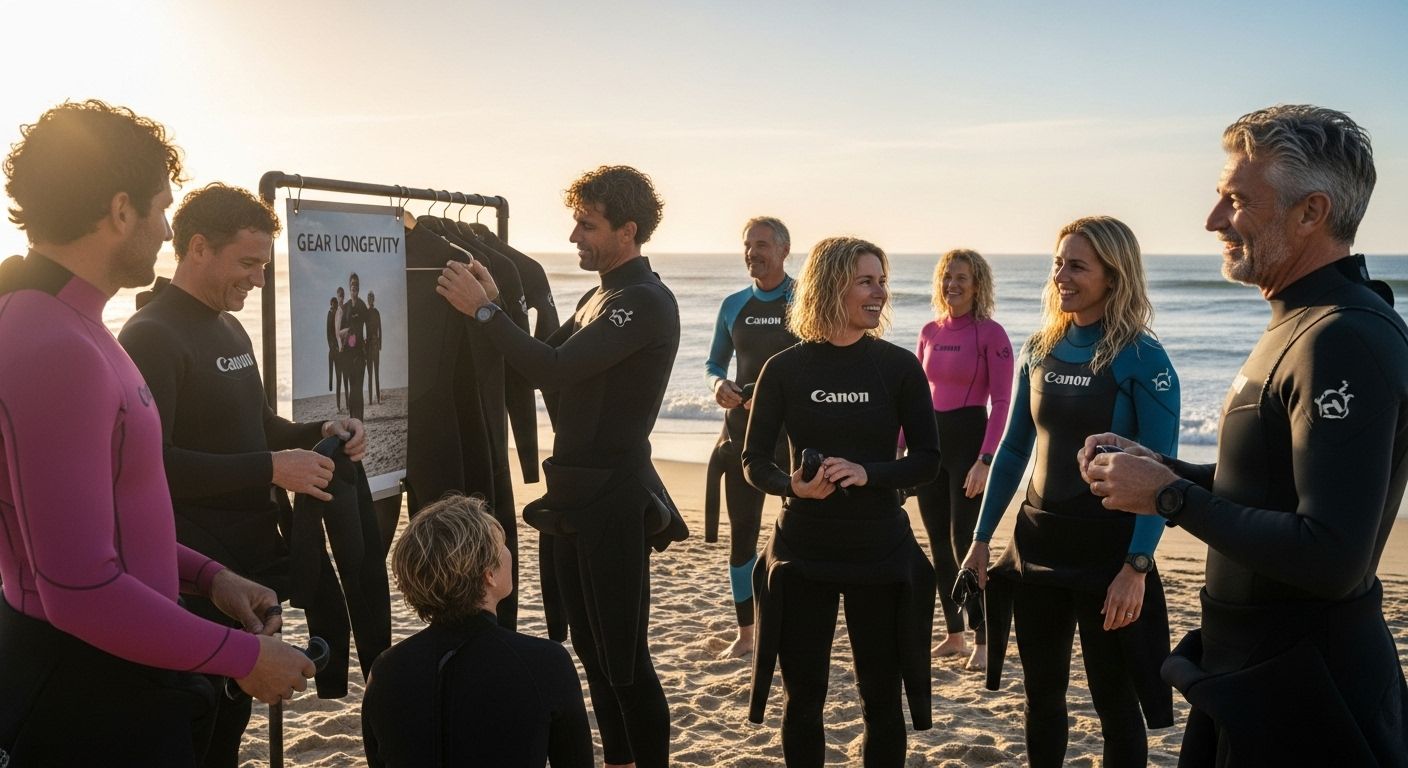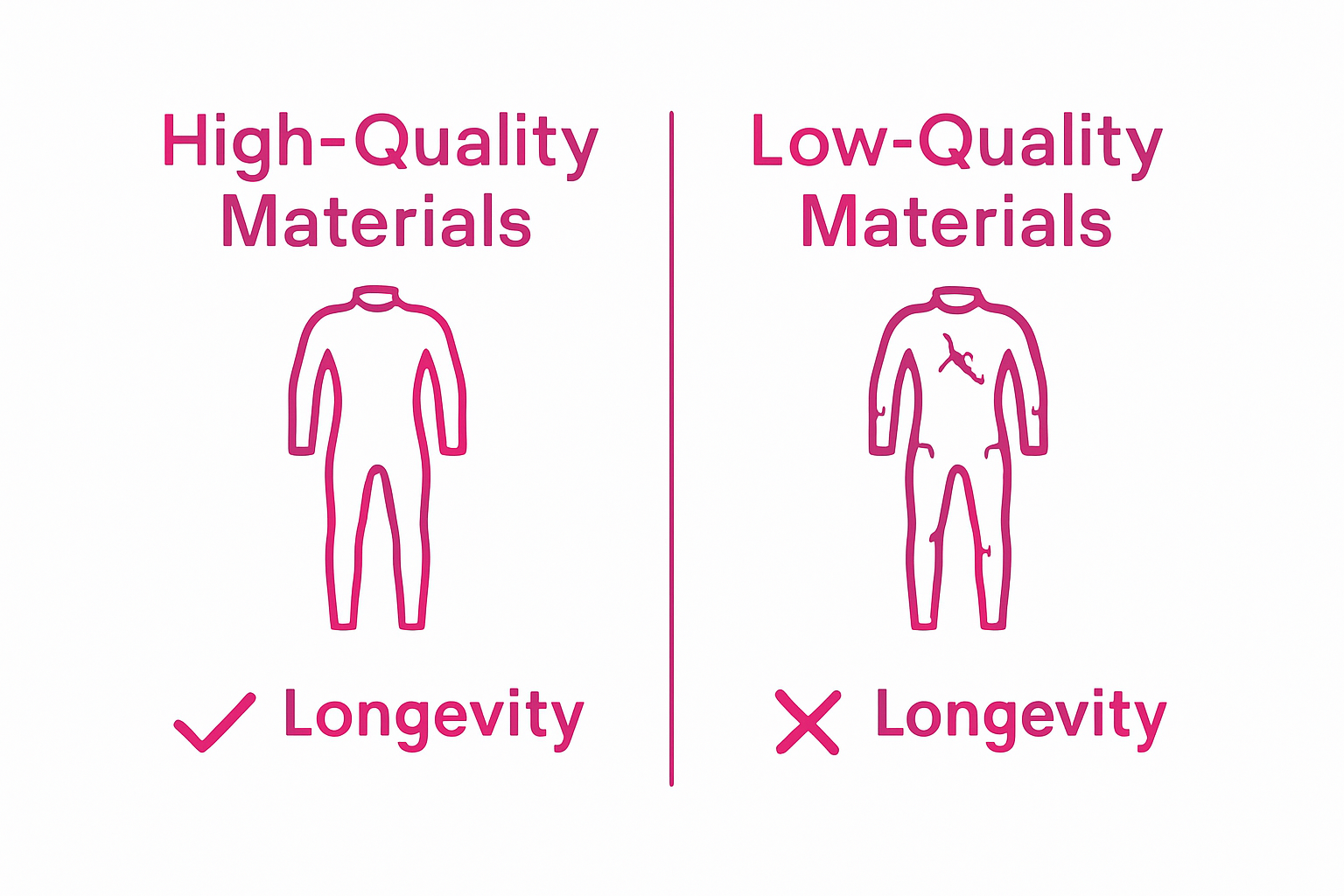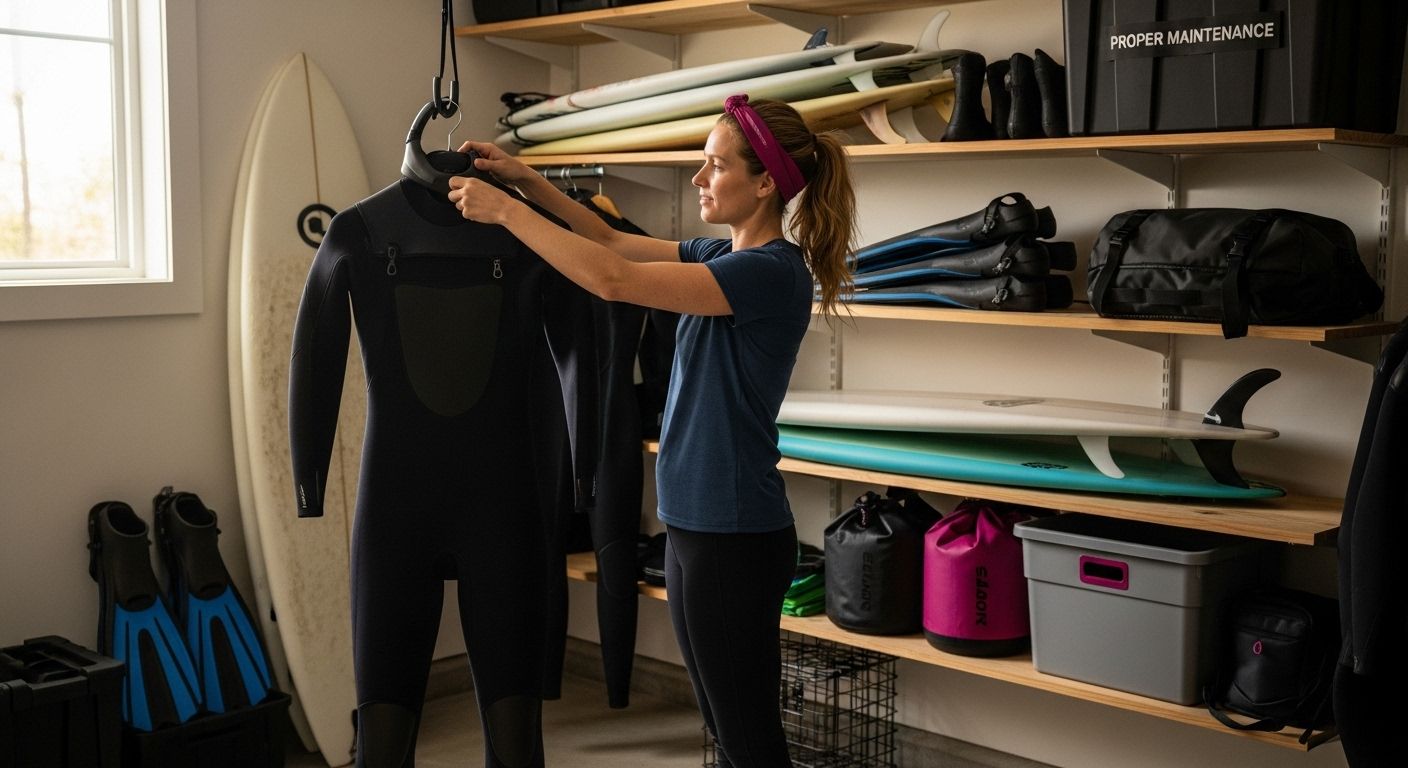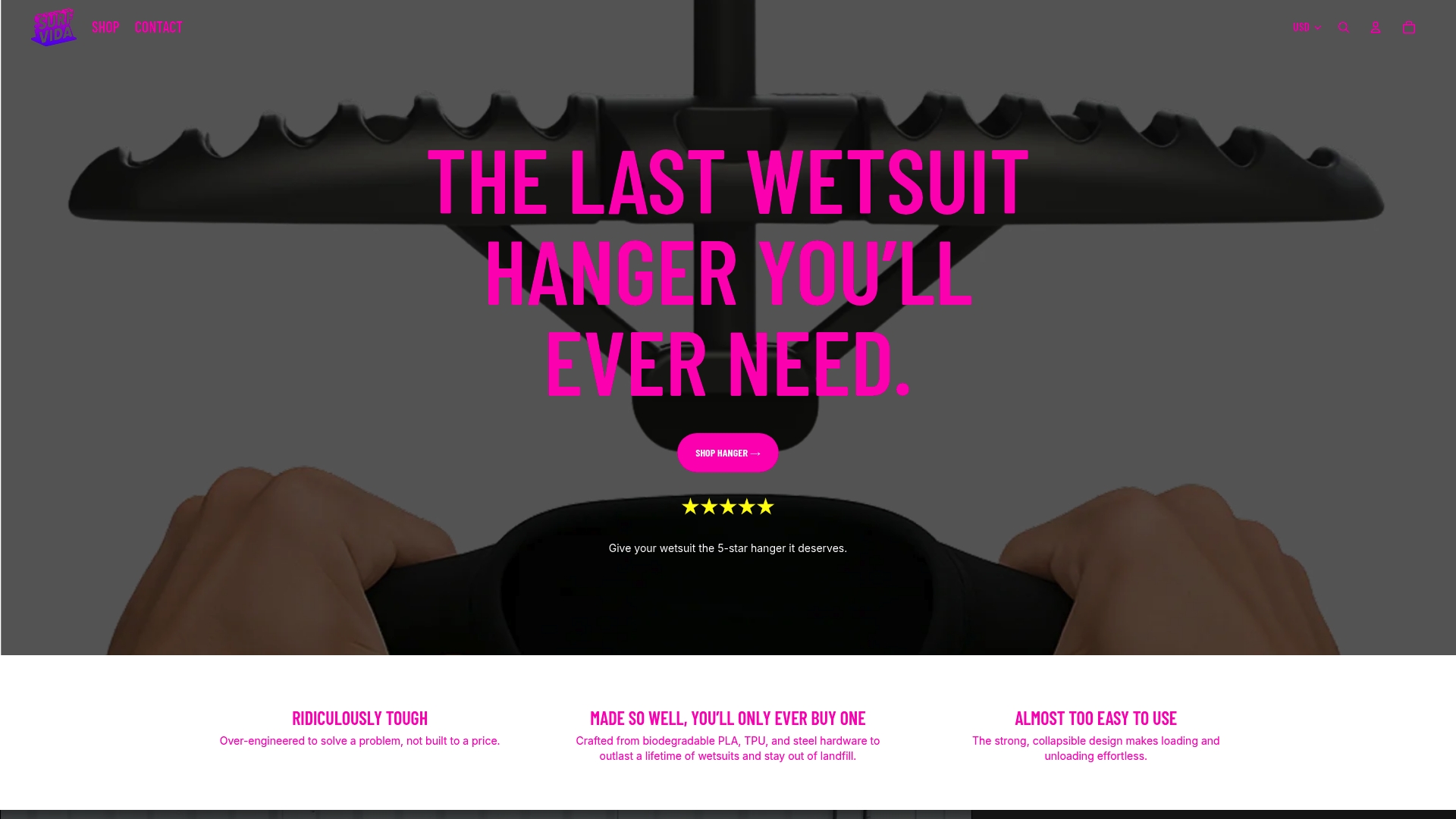
Everyone wants their wetsuit or gear to last through years of surf, sun, and salt water. Premature equipment failure not only racks up replacement costs but also puts your safety at risk right when you need your gear most. People often assume expensive gear always lasts longer. Turns out, how you care for your gear has more impact on its lifespan than the price tag or fancy label.
Table of Contents
- Defining Gear Longevity: What It Means
- The Importance of Gear Longevity in Watersports
- Factors Affecting Gear Longevity: What to Consider
- How Material Quality Impacts Gear Longevity
- Practical Tips for Ensuring Gear Longevity
Quick Summary
| Takeaway | Explanation |
|---|---|
| Prioritize high-quality materials | Select high-grade materials for better resistance against environmental stressors and longevity of gear. |
| Implement proper cleaning protocols | Rinse gear with fresh water immediately after use to remove harmful contaminants and prevent degradation. |
| Store gear correctly to avoid damage | Use specialized hangers and avoid direct sunlight to minimize stress on materials and enhance longevity. |
| Conduct regular inspections for wear | Regularly inspect your equipment for stress points and signs of wear to ensure performance and safety. |
| Understand material properties for selection | Know material characteristics such as UV resistance and elasticity to choose the right gear for durability. |
Defining Gear Longevity: What It Means
Gear longevity represents the sustained performance and durability of equipment over an extended period of time. In the context of watersports and specialized gear like wetsuits, it specifically refers to how well equipment maintains its functional integrity, structural strength, and performance capabilities despite repeated use, environmental exposure, and potential stress factors.
The Core Concept of Equipment Durability
At its fundamental level, gear longevity measures how effectively a piece of equipment can resist degradation and maintain its original quality. For watersports enthusiasts, this means understanding how materials, construction techniques, and maintenance practices contribute to the overall lifespan of critical gear.
Key characteristics that define gear longevity include:
- Resistance to material breakdown
- Consistent performance under varying environmental conditions
- Ability to withstand repeated stress and usage
- Minimal structural deterioration over time
Understanding Wear and Preservation Mechanisms
The science behind gear longevity involves complex interactions between material properties and external stressors. For neoprene products like wetsuits, factors such as UV exposure, saltwater interaction, temperature fluctuations, and mechanical stress directly impact the equipment’s long-term performance.
According to Materials Research Institute, proper storage, careful handling, and strategic maintenance can significantly extend the functional lifespan of specialized watersports equipment. This means using appropriate gear hangers, avoiding direct sunlight during storage, and implementing careful cleaning protocols can dramatically improve how long your equipment remains in peak condition.
Understanding gear longevity is not just about preserving an investment but ensuring consistent safety and performance during water activities. By recognizing the fundamental principles that contribute to equipment durability, water sports enthusiasts can make more informed choices about gear selection, maintenance, and replacement strategies.
The Importance of Gear Longevity in Watersports
Gear longevity transcends mere cost savings. In watersports, where equipment is constantly exposed to harsh environments, understanding and prioritizing equipment durability becomes critical for safety, performance, and overall user experience. The right approach to gear maintenance can dramatically transform how athletes and enthusiasts engage with their preferred water activities.
Economic and Performance Implications
The financial aspect of gear longevity cannot be understated. High-quality watersports equipment represents a significant investment, and extending its functional lifespan directly translates to economic efficiency. Premature equipment failure not only incurs replacement costs but can also compromise user safety during critical moments in water environments.
Key economic considerations include:
- Reduction of frequent replacement expenses
- Minimized downtime between equipment replacements
- Preservation of equipment performance characteristics
- Lower long-term maintenance costs
Safety and Reliability Factors
Beyond economic considerations, gear longevity directly impacts user safety. Equipment that maintains its structural integrity provides consistent protection and performance. For watersports enthusiasts, this means reliable gear that can withstand unpredictable marine conditions.
The U.S. Consumer Product Safety Commission emphasizes that properly maintained equipment significantly reduces risks associated with gear failure during water activities. This underscores the importance of understanding wear mechanisms and implementing proactive maintenance strategies.
To support your gear maintenance journey, check out our heavy-duty wetsuit hanger designed to help preserve your equipment’s quality and extend its functional lifespan. Proper storage is a fundamental aspect of ensuring gear longevity, protecting your investment and maintaining peak performance in watersports.
Factors Affecting Gear Longevity: What to Consider
Gear longevity is a complex interplay of multiple environmental, material, and usage factors that collectively determine the sustained performance and durability of watersports equipment. Understanding these intricate variables allows enthusiasts to make informed decisions about equipment selection, maintenance, and preservation strategies.
The following table summarizes key environmental stress factors mentioned in the article and their effects on watersports gear longevity.
| Environmental Stress Factor | Effect on Gear Longevity | Example of Impact |
|---|---|---|
| UV Radiation | Accelerates material breakdown | Causes neoprene to lose flexibility |
| Saltwater Exposure | Corrodes and degrades material | Leads to cracks and loss of strength |
| Temperature Fluctuations | Weakens molecular structure | Causes overstretching or warping |
| Mechanical Strain | Creates stress points and tears | Results in seams coming apart |
| Humidity and Moisture | Promotes mold and degradation | Leads to odor and material softening |
Material Composition and Quality
The fundamental foundation of gear longevity begins with material selection. For watersports equipment like wetsuits, neoprene quality, fabric resilience, and manufacturing precision play pivotal roles in determining long-term performance. High-grade materials with superior molecular structures demonstrate enhanced resistance to degradation from environmental stressors.
Critical material considerations include:
- Chemical resistance to saltwater and chlorine
- Elasticity and flexibility retention
- UV radiation tolerance
- Molecular density and compression strength
Environmental Stress Factors
External environmental conditions significantly impact gear performance and lifespan. Watersports equipment encounters multifaceted challenges ranging from temperature variations to mechanical stress. Repeated exposure to ultraviolet radiation, saltwater corrosion, temperature fluctuations, and mechanical strain can progressively compromise equipment structural integrity.
According to ResearchGate, material microstructure and engineering precision are fundamental in determining gear longevity. Improper material processing and operational overloading represent primary mechanisms of equipment degradation.
To maximize your gear’s longevity, explore our heavy-duty wetsuit hanger designed to minimize stress and protect your equipment during storage. Proper handling and strategic maintenance can substantially extend the functional lifespan of your watersports gear.
How Material Quality Impacts Gear Longevity
Material quality represents the foundational cornerstone determining the performance, reliability, and durability of watersports equipment. In specialized gear like wetsuits, the molecular composition and manufacturing precision directly influence how effectively equipment can withstand environmental challenges and repeated usage.
Molecular Structure and Performance
The intrinsic properties of materials dictate their capacity to resist degradation and maintain structural integrity. For watersports equipment, this means selecting materials that demonstrate exceptional resilience against complex environmental stressors such as saltwater exposure, UV radiation, temperature variations, and mechanical strain.

Critical material performance indicators include:
- Molecular density and cohesion
- Chemical resistance capabilities
- Elasticity and recovery properties
- Structural stability under dynamic conditions
Manufacturing Precision and Material Integrity
Manufacturing processes play a decisive role in translating material potential into actual performance. Precision engineering techniques determine how effectively material qualities are preserved and expressed in the final product. Imperfections during production can introduce microscopic weaknesses that progressively compromise gear functionality.
According to Engineering Failure Analysis research, high-grade materials processed with meticulous attention to detail demonstrate substantially enhanced resistance to wear, surface degradation, and performance reduction.
To support your understanding of equipment preservation, explore our heavy-duty wetsuit hanger designed to minimize stress and protect your gear’s material integrity during storage. Strategic maintenance begins with understanding how material quality fundamentally shapes gear longevity.
Practical Tips for Ensuring Gear Longevity
Effective gear maintenance transcends casual cleaning. For watersports enthusiasts, implementing strategic preservation techniques represents a proactive approach to protecting valuable equipment investments and maintaining peak performance across various environmental challenges.
Proper Cleaning and Maintenance Protocols
Systematic cleaning represents the first line of defense against equipment degradation. After each water activity, thoroughly rinsing gear with fresh water removes salt, sand, and microscopic contaminants that can progressively compromise material integrity. Specialized cleaning techniques vary depending on specific equipment types, but fundamental principles remain consistent across different watersports gear.
Key maintenance considerations include:
- Immediate post-use freshwater rinse
- Thorough but gentle cleaning techniques
- Complete air drying away from direct sunlight
- Regular inspection for material stress points
Storage and Environmental Protection
Storage conditions dramatically influence gear longevity. Exposure to direct sunlight, extreme temperatures, and humidity can accelerate material breakdown, making strategic storage critical. Proper equipment storage minimizes unnecessary stress on material structures and prevents premature performance degradation.
Optimal storage practices involve:
- Using specialized hangers that distribute weight evenly
- Storing in cool, dry environments
- Avoiding compressed or folded positions
- Protecting from direct UV radiation
To support your gear preservation efforts, explore our heavy-duty wetsuit hanger designed to maintain your equipment’s structural integrity during storage. Strategic maintenance transforms equipment care from a reactive task into a proactive preservation strategy.

Protect Your Gear Investment With Smarter Storage Solutions
Are you frustrated with wetsuits losing their shape, wearing out too soon, or drying unevenly after just a season or two? The article highlights how material deterioration, improper storage, and environmental stress can shorten your gear’s lifespan. As you learned, maintaining gear longevity is not only about performance but also about saving money and protecting yourself in the water.

You do not have to watch your valuable equipment break down faster than it should. Switch to the next level of care with a heavy duty wetsuit hanger designed specifically to protect neoprene, distribute weight evenly, and drastically increase drying efficiency. Discover how thousands extend their wetsuit lifespan using our sustainable, foldable solution at Surfvida. Act now to secure your gear’s longevity and get more out of every session!
Frequently Asked Questions
What is gear longevity?
Gear longevity refers to the sustained performance and durability of equipment, particularly in watersports. It encompasses how well gear maintains its functional integrity over time despite repeated use and exposure to harsh environmental conditions.
Why is gear longevity important for watersports enthusiasts?
Gear longevity is crucial for safety and performance during water activities. Equipment that maintains its structural integrity can reliably withstand unpredictable marine conditions, ensuring user safety and enhancing overall experience.
What factors affect the longevity of watersports gear like wetsuits?
Key factors affecting gear longevity include material composition and quality, environmental stress factors (like UV exposure and saltwater corrosion), and proper maintenance practices. High-quality materials and strategic care can significantly extend the lifespan of gear.
How can I ensure the longevity of my wetsuit or watersports gear?
To ensure gear longevity, implement proper cleaning protocols, such as rinsing equipment with fresh water after each use, and follow optimal storage practices by using specialized hangers, avoiding direct sunlight, and keeping gear in cool, dry environments.

